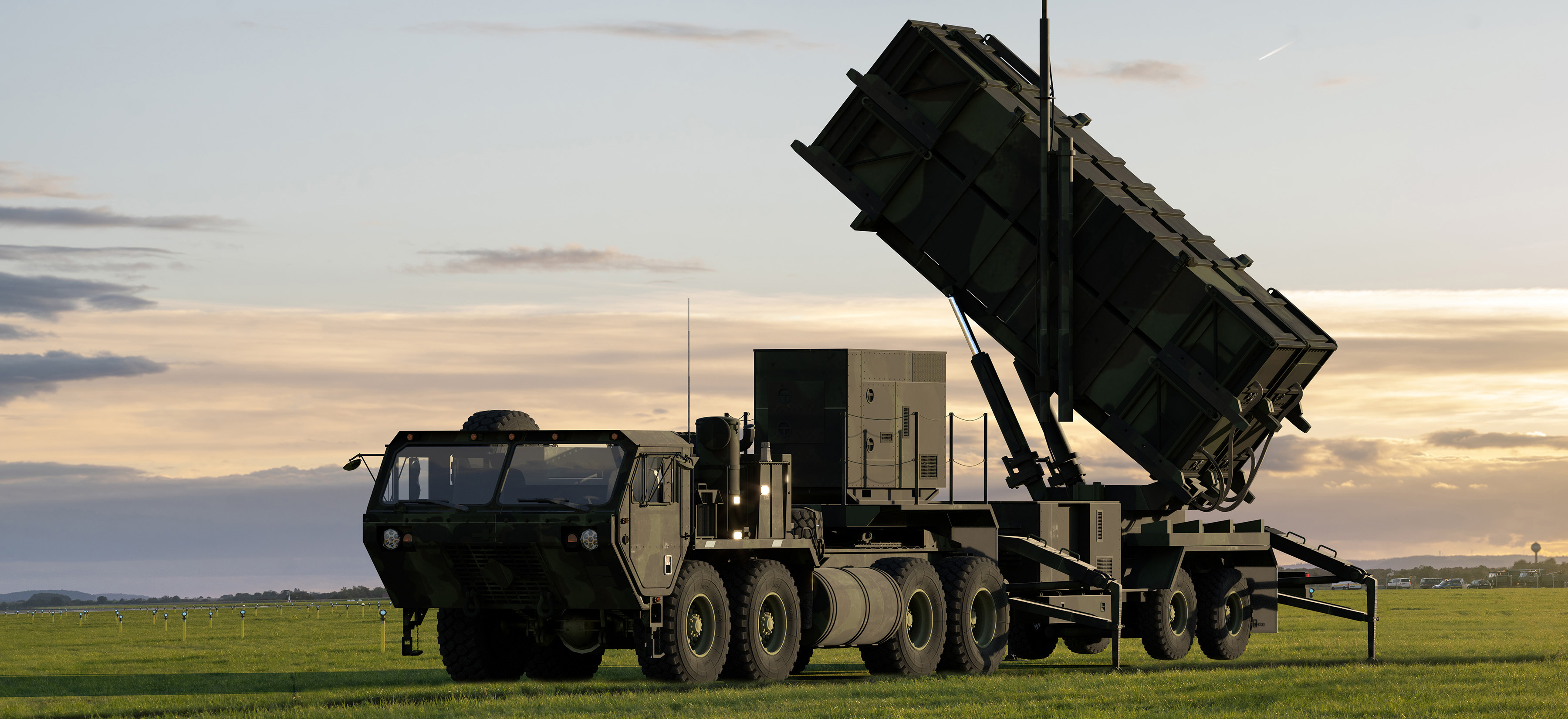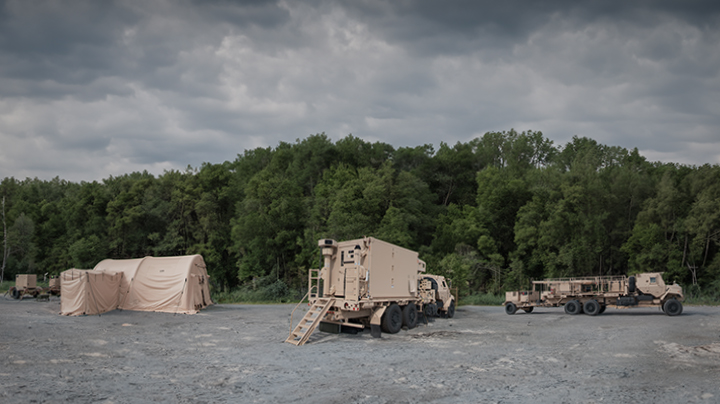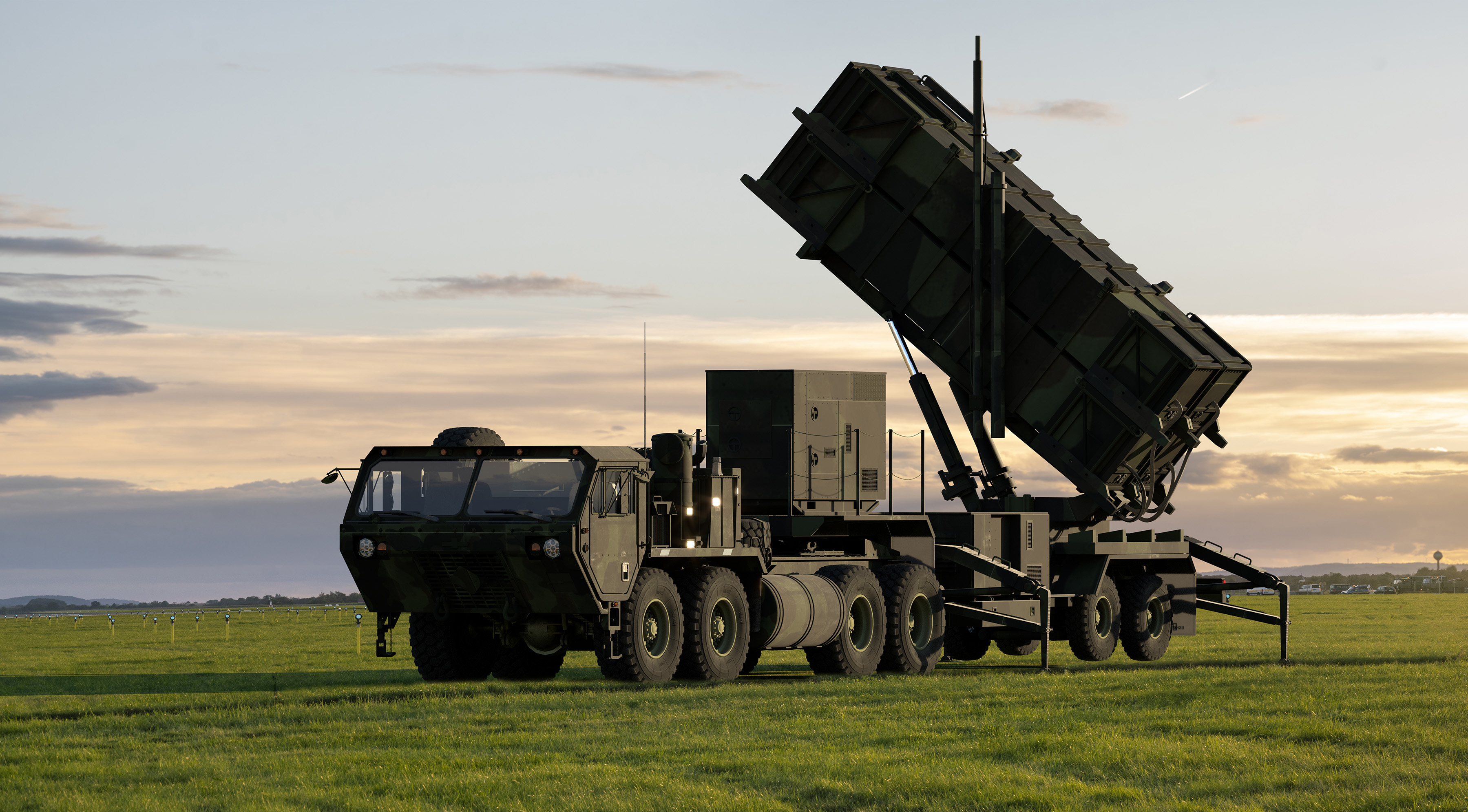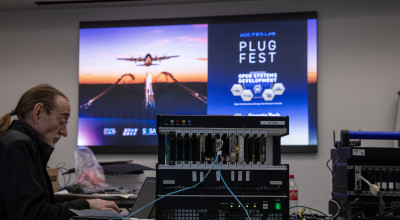
The U.S. Army is moving its air and missile defense assets to a new fire control network that will allow sensors such as radars and a variety of defensive and offensive weapons anywhere on the network to be fully integrated – and able to engage hostile air and short-, medium- and long-range missiles.
The Integrated Battle Command System (IBCS), which was approved for full-rate production in April 2023, is currently the Army’s top air and missile defense modernization effort. IBCS, which has been supported by the Georgia Tech Research Institute (GTRI) since very early stages of the program in 2004, will ultimately replace older air and missile defense command systems that were built to counter specific threats and applications.

For the Army, GTRI has supported the integration of sensor and weapon systems through software that adapts those assets to the network and allows them to work together. GTRI has also carried out a broad range of tasks focused on IBCS, including developing requirements and reference architectures, helping chart a path for software development, participating in the evaluation of options for integrating existing systems, supporting flight tests, and demonstrating defensive system integrations.
“We are providing software systems engineering support, DEVOPS support on the low side, and working to help the Army develop its software integration and software development factory,” said Patrick Dowdy, a senior research engineer who manages the GTRI portion of the effort. “We develop tools to support integration and testing of weapon and sensor components and provide a software library that vendors can use to bring the components they are developing into the network.”
Mission requirements for the research come from the U.S. Army Program Executive Office Missile and Space, and the U.S. Army Aviation and Missile Command.
GTRI Provides Long-Term Support
For more than 40 years, GTRI has conducted applied research to analyze, develop, integrate, test, deploy, and sustain ground-based air and missile defense command, control, communications, computers, and intelligence hardware- and software-intensive systems for the U.S. Army. GTRI support for IBCS began 20 years ago with a handful of GTRI researchers before the project became a program of record.

“IBCS is the command-and-fire control of the system that includes different components – radars, launchers, and other types of systems,” said Dowdy, who was part of that initial team. “IBCS is the brain that brings all of those things together, deciding which are the best sensors and weapons to prosecute an engagement to support air and missile defense.”
GTRI helped with the early architecture of the system, and is continuing that support as the Army moves to field and upgrade the system. Over 20 years, GTRI has been awarded approximately $86 million to support the project, and that funds a team that has grown to include dozens of researchers.
“When the government as Lead Systems Integrator took over the systems engineering and software development, our role became more focused on providing systems engineers to work on how new components would be integrated into the architecture,” Dowdy said. “We are also helping the Army stand up the new facilities where the government will be building the new software and where it will be integrated and tested.”
Building Interface Test and Adaptive Software Tools
A major contribution from GTRI to IBCS has been the development of software tools known as the AB Interface Test Tool (ABITT) and the AB Adaptive Layer (ABAL) software. These two USG owned software tools, developed by researchers under the leadership of GTRI Senior Research Scientist Chris Wyland, facilitate the connection of existing and new sensors, weapons, and other components to IBCS.
“If you are a component developer and you want to develop an adaptation of your components to talk with IBCS, ABITT provides a set of scripts that mimic the IBCS system and allows testing of the implementation or adaptation in a developer’s laboratory,” said Dowdy.
ABAL, also developed and supported by GTRI, provides a software library that automates much of the business logic of the interface between components and IBCS. “Component developers integrate ABAL into their systems,” he explained. “ABAL provides a unified and government-approved path for the integration of a component into IBCS, allowing them to quickly adapt to and integrate the components into the IBCS.”
As new components are developed to meet specific needs, they will be integrated into IBCS using ABITT and ABAL. Development of the two software tools began in 2012.
How IBCS Will Interact with Existing System Components
Before weapon and sensor components are integrated into the IBCS system, extensive testing must be done to evaluate how they will operate and respond as part of that network. For example, GTRI supported a multi-organizational evaluation of how components of the Terminal High Altitude Area Defense (THAAD), an existing anti-ballistic missile system, will be integrated into IBCS.
Several options were studied for accomplishing the move, and recommendations were provided to the Office of the Undersecretary of Defense for Research and Engineering for evaluation. The option with the most promise requires the THAAD system with its radars and launchers and its command-and-control system to be decomposed and integrated into IBCS as weapons and sensors on the network instead of connecting to their existing command-and-control system, Dowdy said.
GTRI has also supported studies of how IBCS can be integrated into systems protecting specific areas of the United States and the globe that are now covered by older ballistic missile defense systems. Ultimately, radars and weapons that are part of those existing systems will be integrated into IBCS.
IBCS Supports Open Systems Architecture
To accommodate development by multiple vendors, IBCS was built on open architecture standards that allow components connected to it to interact without proprietary constraints. The goal was to allow the integrated system to choose the best response to threats regardless of where the component originated. The open architecture also accelerates integration of new components into IBCS.
“Early on in the program, before IBCS was even a program of record, GTRI developed an open architecture computing environment standards document and a reference architecture,” Dowdy explained. “IBCS was designed up-front to be open and the protocols that are used for components to communicate within it use the open standards that were mandated by the original software design. We are pleased to see this implemented to enhance the Army’s warfighting capabilities.”
In addition to those already mentioned, GTRI researchers Brandon Jinright, Jacob Nelson, Savannah Crowley, Chris Garrison, Russell Ivey, Adam Leffler, Laura Romanchik, Ken Hudson, Josh Langford, Christopher Sims, Lee Meinecke, Will Phillips, and Andrew Ragland are among those who have contributed to the IBCS project.
Writer: John Toon (john.toon@gtri.gatech.edu)
GTRI Communications
Georgia Tech Research Institute
Atlanta, Georgia USA
The Georgia Tech Research Institute (GTRI) is the nonprofit, applied research division of the Georgia Institute of Technology (Georgia Tech). Founded in 1934 as the Engineering Experiment Station, GTRI has grown to more than 2,900 employees, supporting eight laboratories in over 20 locations around the country and performing more than $869 million of problem-solving research annually for government and industry. GTRI's renowned researchers combine science, engineering, economics, policy, and technical expertise to solve complex problems for the U.S. federal government, state, and industry.




